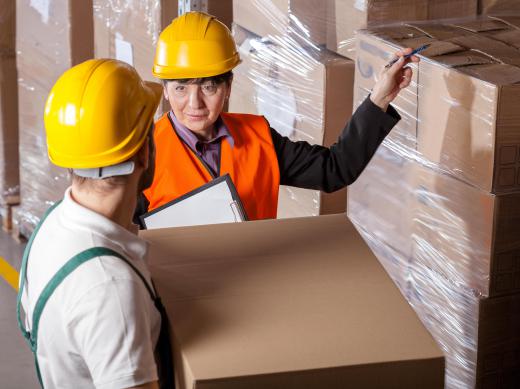An automated warehouse is a facility where all or some of the tasks related to storing, retrieving, and moving inventory are carried out by automated systems. Using automation can cut down on costs associated with running the warehouse in the long term, although such systems are costly to implement initially. It can also provide added security, by keeping human workers out of sensitive environments. Numerous companies offer systems for use in warehouse automation and can provide consulting services, helping companies determine and meet their needs.
In an automated warehouse, goods can be moved by robots, along with conveyors and overhead pulley systems. Commonly, objects in the warehouse are tagged to allow them to be located by computer, and the inventory is continuously updated as objects move in, out, and around the warehouse. Technology like radio frequency identification (RFID) can be very useful in an automated warehouse.

Automatic storage and retrieval (ASRS) is used in warehouses where robots store materials, selecting the best location on the basis of available space and inventory rotation needs, and retrieve those materials when they are needed. For order fulfillment, robots can be used to automatically pick and fill orders, preparing them for shipment and sending them through machinery to seal the order, add shipping stickers, and route it to another destination for pickup by a delivery service.

Usually, an automated warehouse is expensive to set up. Existing systems for storing materials may need to be retrofitted to accommodate automation, such as making racks for pallets wider to accommodate conveyor belts. The floorplan may also need to be adjusted to meet the needs of robots and other automated machinery. The automation equipment also tends to be expensive, and people must factor in long term maintenance and repair expenses when considering the costs of converting to an automated warehouse.
Consultants can inspect a warehouse and meet with company officials to see if automation is appropriate for them. They can offer advice on what kinds of systems to install, how to lay out the warehouse, and how to use the automated systems for maximum effectiveness. One important consideration is the need for eventual expansion, making it important to purchase systems with room for configuration and adjustments as the company's business changes. A rigid system can become a hindrance, making it hard to expand product lines, increase sales, and make other changes to the way a company does business.
Ever since she began contributing to the site several years ago, Mary has embraced the exciting challenge of being a About Mechanics researcher and writer. Mary has a liberal arts degree from Goddard College and spends her free time reading, cooking, and exploring the great outdoors.

